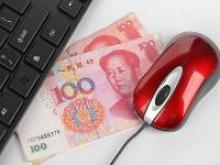Short-term focus poses major tech challenge for Chinese SMBs

The biggest technology challenge for small and midsize business (SMB) in China is the lack of capital to invest in IT systems and IT staff.
Many SMB owners in the country have the tendency of looking for short-term profit, said Zhang Peifei, associate for Asia-Pacific SMB Research at AMI Partners. So they might find it difficult to justify the investment in technologies, such as an enterprise resource planning (ERP) systems, which take longer to achieve returns on investment, she added.

The research firm defines SMB as a company with less than 1,000 employees but does not include home-based businesses or non-profit organizations, she added.
Nash Narasimhan Tupil, marketing director for channel, alliances and SMB marketing at Hewlett-Packard enterprise group for Asia-Pacific and Japan, agreed that cash flow is one of the major problems for SMBs in China.
Besides the shortage of capital, Zhang said most SMBs lacked dedicated IT resources to manage their existing infrastructure and systems. She noted that less than 10 percent of the firms have full-time IT employees.
Chinese SMB market competitive
In China, 99 percent of businesses are SMBs, said Zhang. Citing AMI-Partners' Global Model which tracks the world's ICT spending twice a year, she added that China had 3.4 million SMBs in 2011.
Based on last year's total worldwide SMB IT spending, Tupil added that China is becoming the world's largest SMB market.
Compared to SMBs in the United States, businesses in China are younger, said Zhang. In China, the average age of small businesses--which are companies with one to 99 employees--is 8.2 years while the age of such a small enterprise in the U.S. is 24 years, she said.
Midsize enterprises in China--companies with companies with 100 to 999 employees--have an average age of 8.2 years while those in the U.S. have an average age of 31.3 years, she noted.
IT needs differ for small and midsize businesses
AMI-Partners' research conducted in 2011 found out that while almost all midsize businesses used the Internet for business purposes, this was true only for less than 40 percent of small businesses, Zhang said.
This explains the different IT needs between the two groups. "For China's small businesses, improving IT infrastructure such as improving bandwidth speed is the most important IT issue to their success," she said.
The technology needs of their larger counterparts are more complex. Zhang highlighted data security, enterprise technology such as customer relationship management (CRM) software and ERP, and mobile security as the three most important IT issues for midsize businesses.
"As midsize businesses are realizing the importance of data to their business, they are deploying resources for back-up and recovery solutions to ensure business continuity," she added.
According to Tupil, mobility is a tech challenge for most SMBs. "More than ever, business e-mail users are relying primarily on a tablet or mobile client instead of a traditional desktop. This trend requires SMBs to prepare their infrastructure to address wireless security threats and secure access to company data," he said.
However, SMBs are typically challenged by limited resources to simplify technology infrastructure and management for mobile environments, he said.
Other challenges for Chinese SMBs
Besides technology challenges, Zhang noted that the top challenge faced by China SMBs is raising capital investment. "Banks prefer to lend money to the state-owned companies and government-linked agencies," she explained.
Rising labor and raw material costs are also problems for these businesses. "The global economy's slowdown and increasing external pressure on exchange rate are boosting concern among Chinese SMBs with their export-oriented business model [because it makes their products relatively more expensive and less competitive]. Chinese SMBs that are concerned economic climate increased two to three times over the last year," she added.
Thus, the Chinese government has a "great responsibility" to help SMBs tide over the difficult period, Zhang said, adding that it needs to be mindful of the impact on SMBs when making any economic policy changes.